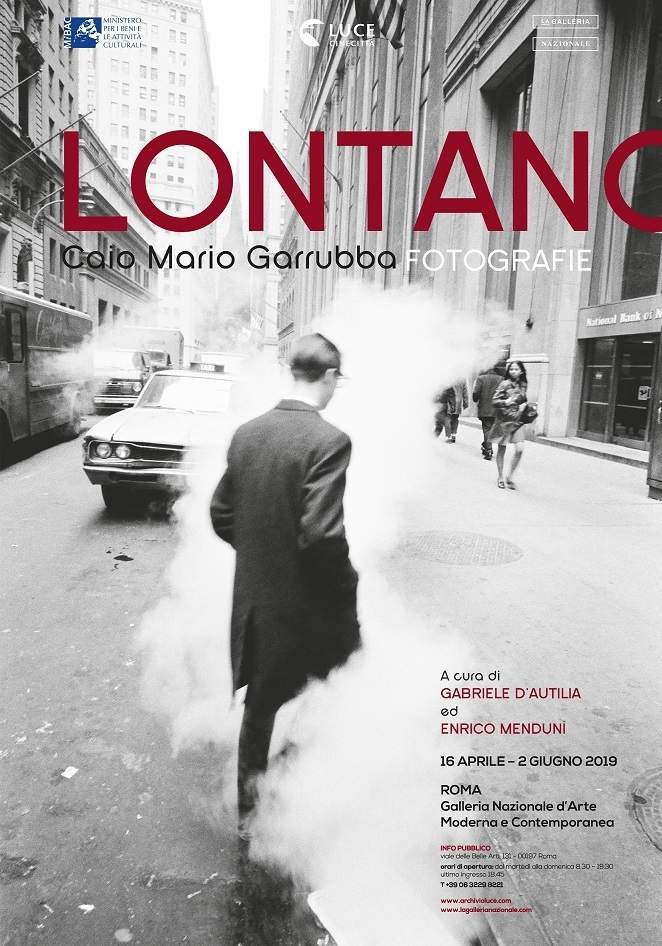An exhibition in Rome on Caius Mario Garrubba, one of the great Italian photojournalists of the 20th century
For the first time, an exhibition reveals in its entirety the talent of one of the most important authors of Italian and European photojournalism, namely Caio Mario Garrubba (Naples, 1923 - Spoleto, 2015): the review, entitled Lontano. Caio Mario Garrubba. Photographs, which takes place at the Galleria Nazionale d’Arte Moderna e Contemporanea in Rome from April 16 to June 2, 2019 and traces the great photojournalist’scareer , is made possible thanks to theIstituto Luce Historical Archive’s acquisition of the photographer’s entire archive (60,000 negatives and 40,000 slides, as well as a large number of vintage prints, notes and test prints).
Garrubba, linked to that leftist culture that saw in the Soviet Union and in the countries of real socialism a promise and a hope, knew how to photograph this reality always with a disenchanted eye, but constantly participating in the people and the human factor. Hence a photograph that is not an eyewitness account of the History of a century, but of the humanity and vitality that moved it. Beginning with a trip in ’53 to Franco’s Spain, Garrubba’s photographic journey (and the exhibition’s) takes the audience to communist Poland (where he meets what would become his beloved companion, Alla Folomietova), to “faraway” China (famous is his shot of ChrušÄëv portrayed from behind next to Mao Zedong) and to the cold and gloomy post-Stalinist Soviet Union. But also in Naples and in his parents’ homeland of Calabria, as well as in Brazil, in Thaiti, in the United States, and in France, where he met Henri Cartier-Bresson, the best-known admirer of his work, with whom he shared not only a’love for the Leica (the “historic” camera of international reportage) but also that for art, the foundation of a “visual education” that would accompany him in every shot he took.
Lontano shows 100 mostly black-and-white shots with an appendix dedicated to color, which are intended to give a sense of how much Garrubba has woven in more than fifty years of work behind the camera. As curator Gabriele D’Autilia points out, “it is personalities like Garrubba, capable of crossing boundaries, both material and mental, who have taught us the art of photography.” Lontano ’s itinerary is enriched by the presence of original materials from Garrubba’s workshop, starting with the original cut specimens, negatives, and a collection of thoughts from Caius Mario’s texts and notes on the photographer’s craft. In addition, a collection of international magazines, among the most authoritative, that have dedicated covers and articles to his work over the years.
Closing the itinerary is a very significant document, namely a short documentary produced by Luce-Cinecittà, directed and edited by Niccolò Palomba, with an interview with Alla Folomietova Garrubba, his wife and key lifelong collaborator, who passed away in January this year, which at the end of the exhibition recounts Garrubba’s human profile, along with that of the photographer.
Accompanying the exhibition at the National Gallery of Modern Art is a catalog published by Contrasto and Istituto Luce-Cinecittà, with all the photographs on display, accompanied by essays by curators Gabriele D’Autilia and Enrico Menduni, which trace the ethical and aesthetic profile of the reporter Garrubba and frame him in his definitive international placement, alongside his friend Cartier Bresson, and the great American photographers of Magnum, of a Central European aesthetic that the photographer studied carefully. Today it is European photography that keeps Garrubba among the texts to be studied and understood. Completing the volume is a memoir by Maria Gabriella Macchiarulo dedicated to Alla Folomietova Garrubba, Caius Mario’s wife and key lifelong collaborator.
For all information you can visit the official website of the Luce Archives.
 |
| An exhibition in Rome on Caius Mario Garrubba, one of the great Italian photojournalists of the 20th century |
Warning: the translation into English of the original Italian article was created using automatic tools. We undertake to review all articles, but we do not guarantee the total absence of inaccuracies in the translation due to the program. You can find the original by clicking on the ITA button. If you find any mistake,please contact us.





























